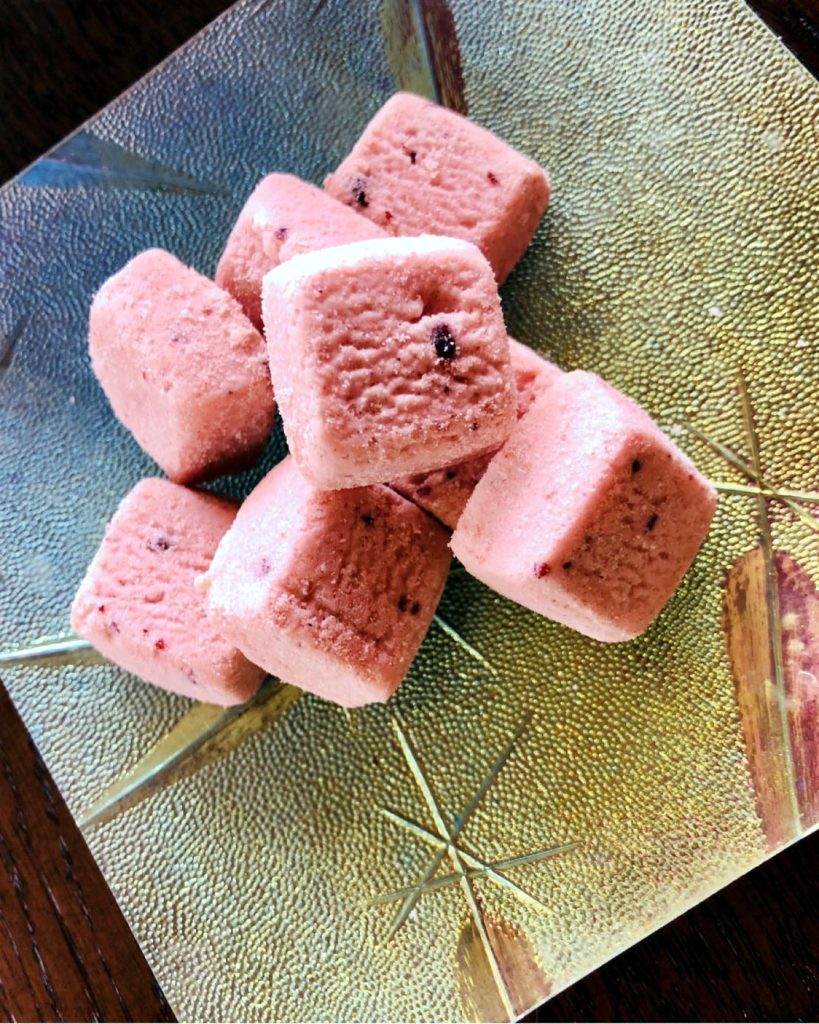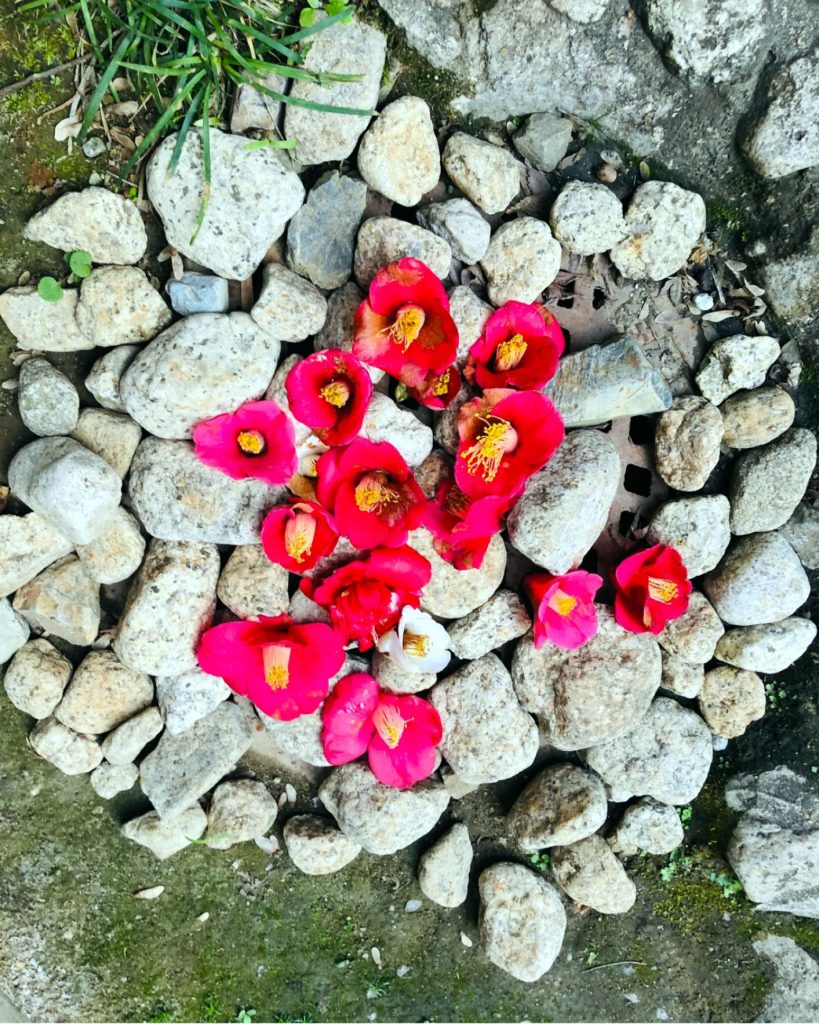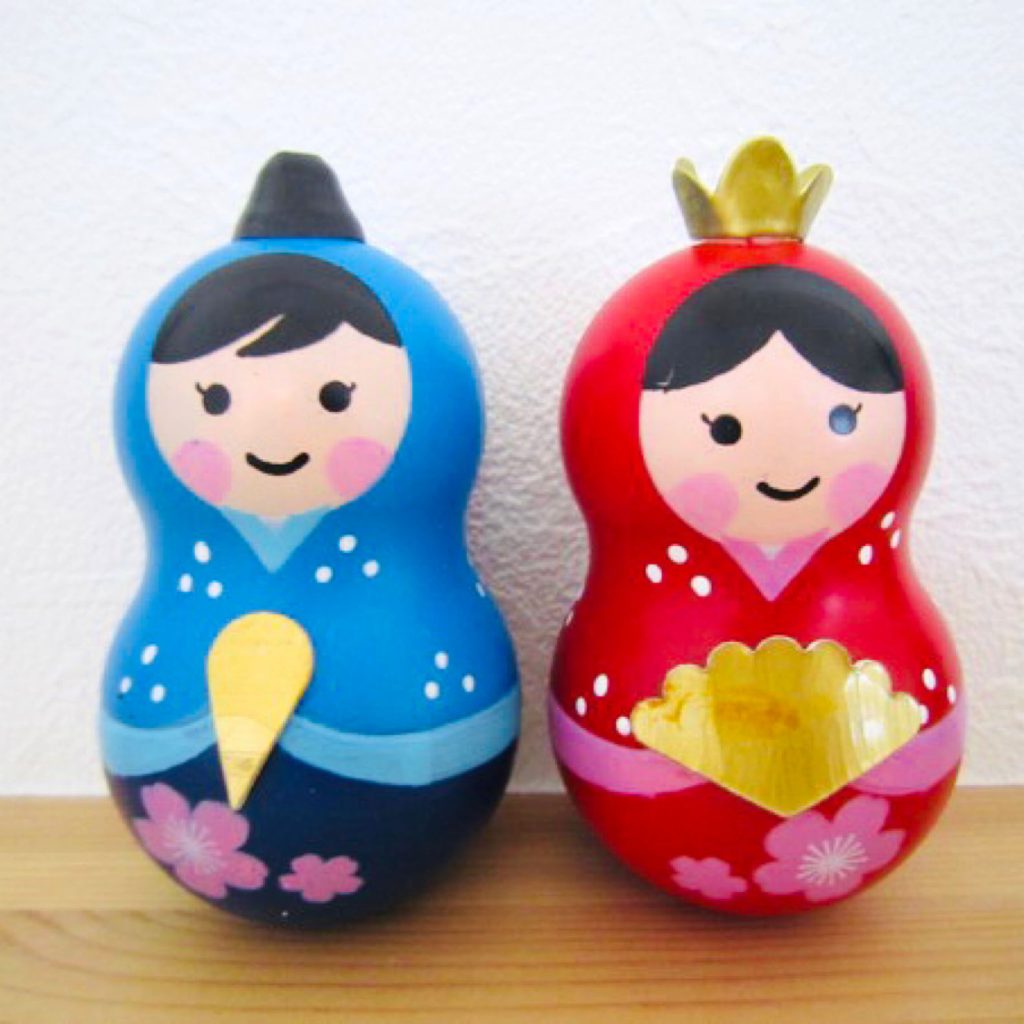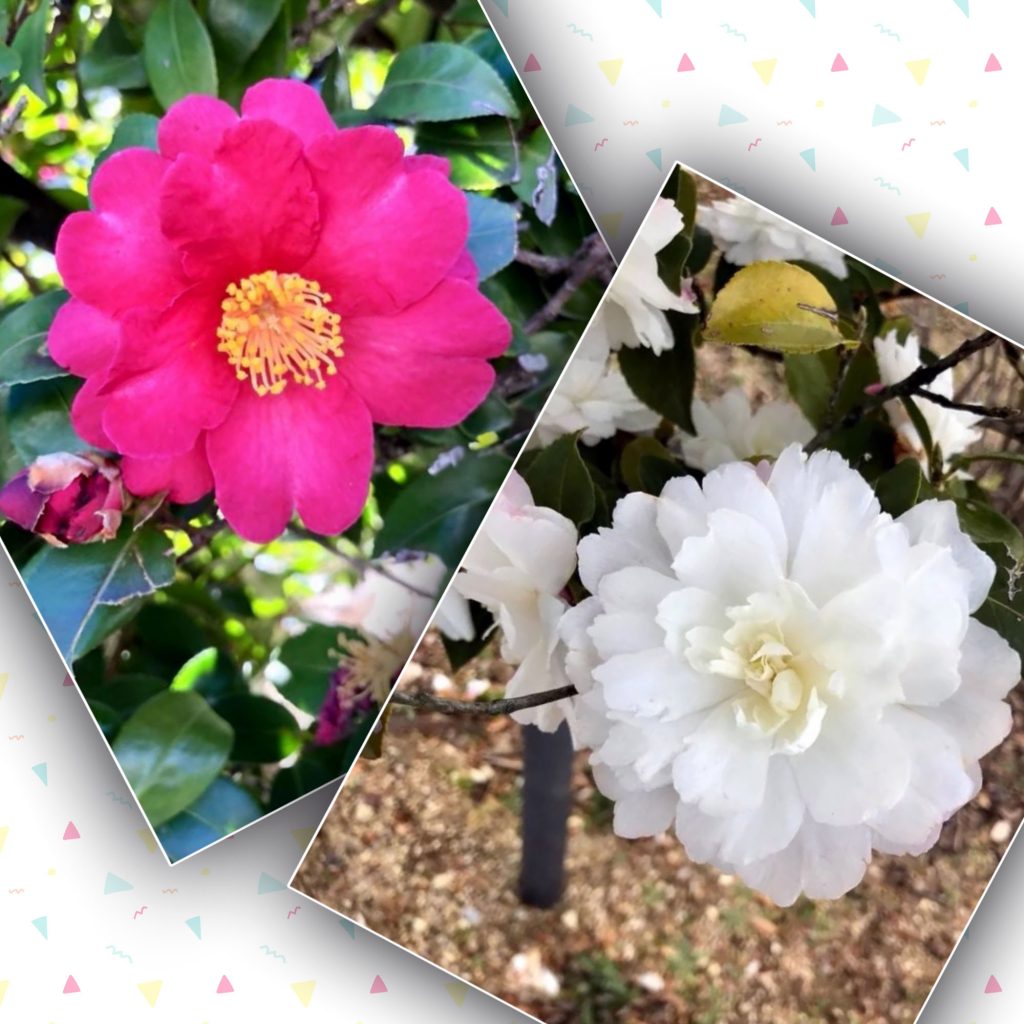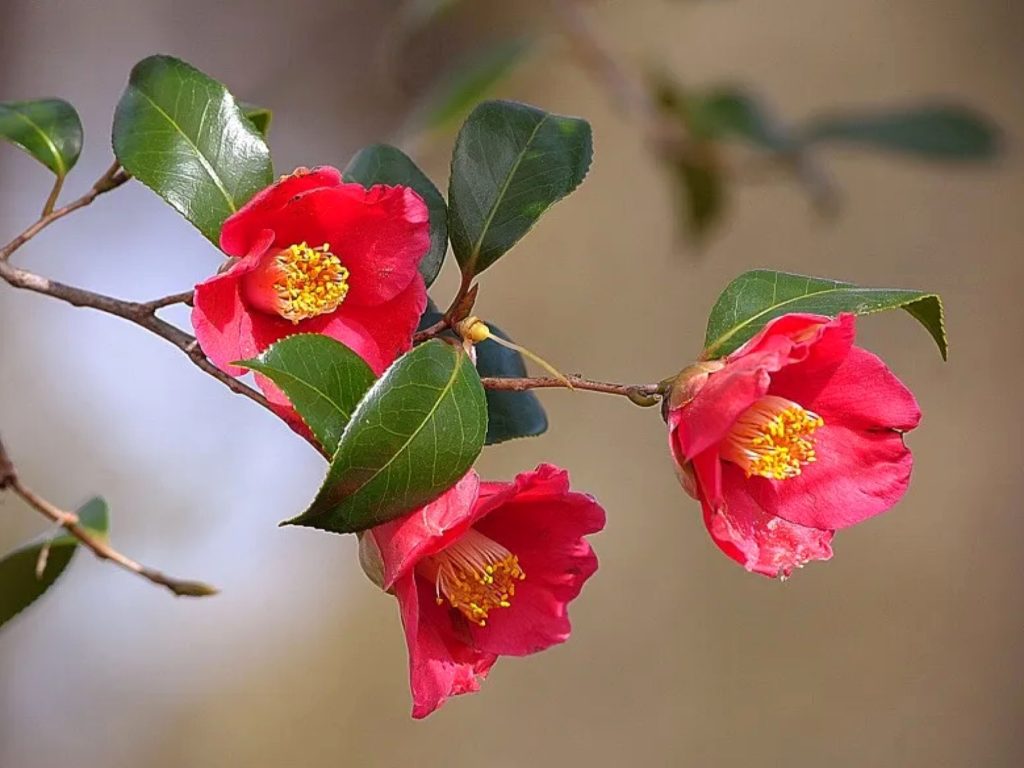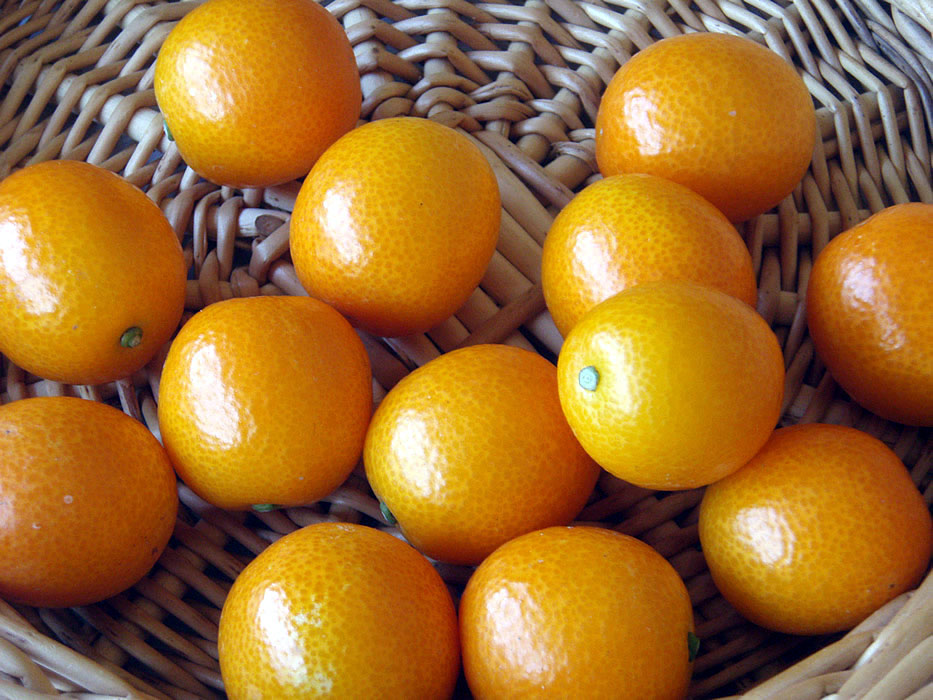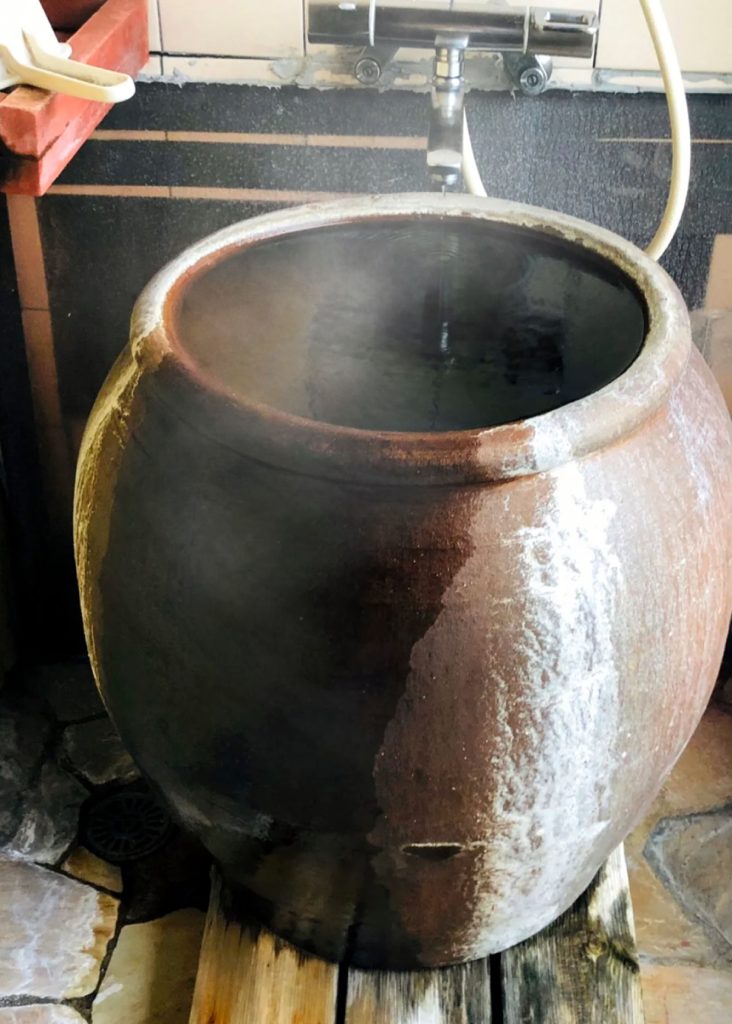
Hot springs come to mind when it’s cold like this. I have many fond memories of hot springs. My oldest memory is the hot springs in Atami. My great-uncle, who was a teacher of joruri(a narrative chanted to the accompaniment of the samisen) , lived in Atami, so I used to go there a lot when I was a kid. I don’t know about Atami now, but before the Great Fire of Atami (1950), there was a large public bath in the city where geisha with their hair done Japanese style often visited. The beautiful appearance left a strong impression on my child’s mind. Decades later, when I traveled to Izu, I remember soaking in the pot bath pictured above. I forgot the details, but I happened to be invited to a house and entered this pot bath. Hot springs are drawn from the source, and plenty of hot water is filled in Shigaraki pots that only one person can put in. The hot springs while gazing at the vast ocean of Izu below us were exceptional.
こう寒いとつい思い浮かぶのは温泉です。温泉にはいろんな思い出があります。一番古い思い出は熱海の温泉です。浄瑠璃の師匠をしていた大叔父が熱海に住んでいたので、子供の頃はよく行きました。今は知りませんが、熱海の大火(1950年)前には、市街地に大浴場があって、そこは混浴で、髪を結ったままの芸者さんがよくきていました。子供心に綺麗な姿がとても印象に残りました。それから何十年も経って、伊豆を旅行した折、写真の壺湯に浸かったことも思い出します。詳しい経緯は忘れましたが、たまたまあるお家に招かれて入ったのがこの壺湯です。源泉から温泉が引かれていて、人一人が入れる信楽焼の壺にはたっぷり湯が張られています。眼下に見える伊豆の大海原を眺めながらの温泉は格別でした。

